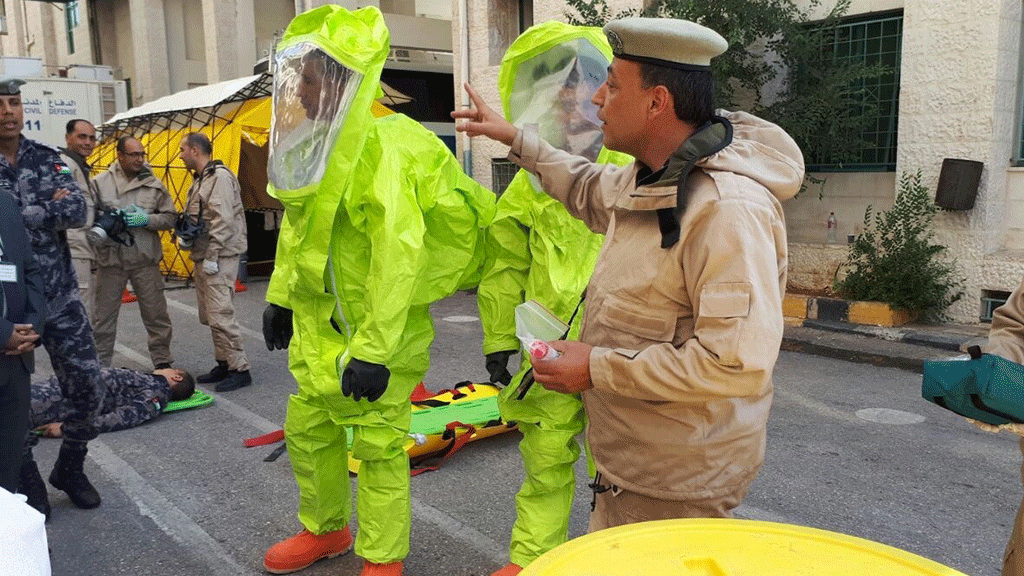Returning to Sierra Leone: Community Impact Parallels between Ebola and COVID-19

It’s a rare gift to go back to where things began, whether it’s visiting your childhood home, or getting back in touch with an old friend. I experienced this rare gift last summer during a return visit to Sierra Leone. This trip provided the opportunity to work on a CRDF Global project that embodies a passion of mine: engaging local communities to prevent the spread of infectious diseases.
My first trip to Africa was to Sierra Leone in October 2013. We were working with the staff of the Kenema Government Hospital (KGH) to host a training on viral hemorrhagic fevers for Nigerian public health professionals, using Lassa virus as a model for the training. Lassa fever is a disease that was first discovered in and continues to be endemic to Nigeria. The virus is spread to people through contact with a particular species of mouse, which is especially successful at living among extremely low-income people, due to the ease in which the mouse can enter their households and come in contact with food. The disease is a major public health threat throughout Sierra Leone, and the KGH is a center of excellence for surveilling and treating the disease.
The two-week training leveraged the expertise of the KGH community – doctors, nurses, and laboratorians, and its Director, Dr. Sheikh Humarr Khan – to increase the capacity of Nigerian public health professionals to detect, respond, and control viral hemorrhagic fever outbreaks in Nigeria. The experience was profound for me, both personally and professionally. Improving the quality of life for those most impacted by tropical diseases was the reason I pursued a career in global public health; the connections I made with participants and my colleagues remain strong to this day.
In November I left Sierra Leone, and then the unexpected happened. Less than two months after returning home, the index case of what would be the largest Ebola outbreak in history emerged just 200km from Kenema. The KGH would soon be the focal point in the fight against Ebola. Dr. Khan, himself, would succumb to the disease, along with other staff that collaborated with the training. Naturally, I felt utterly helpless as the people I cared about worked tirelessly to save lives at great risk to themselves. I also felt pride in those same people who were boldly accepting this fight in Nigeria and Sierra Leone.
Fast forward to early 2019, I returned to Sierra Leone to raise awareness on the transmission of Marburg – another deadly hemorrhagic fever virus – as well as a new strain of Ebola dubbed “Ebola Bombali”. This new strain was not infectious to humans, but there was great concern about “spillover” – an event where a virus overcomes existing barriers necessary to infect new species… most importantly, humans.
Once in Sierra Leone, the work required close coordination with an incredible community outreach team at the Directorate of Health Security and Emergencies for Sierra Leone’s Ministry of Health and Sanitation, which included some familiar faces from my previous work six years prior. The outreach focused on community engagement programs to raise awareness of zoonotic disease transmission, appropriately titled: “leave bats alone”. To ensure broad outreach, we leveraged a variety of communication platforms, most notably elements of radio, print, and poster messaging, as well as meetings with community leaders and constituents. On each outreach platform, the team shared strategies for limiting contact with bats to reduce the risks of Marburg infections and the possibility of a viral spillover event with Ebola Bombali. Leaders at all levels– teachers, local government, religious leaders, heads of NGOs– came together to listen, to understand, to share perceived challenges, and to recommend steps to take that would benefit their community. Their involvement was extremely important because engaging communities from a place of compassion instead of fear is more likely to inspire desired outcomes and behavior changes.i They would take the information they learned back to their peers, a unified message rooted in science and collaboration: leave bats alone.
Returning to Sierra Leone reaffirmed my belief that working at a community level is crucial to reducing the spread of disease.ii Building support “from the ground up”, building trust within communities as they work with national level programs, and inviting an equal voice in shared messaging are all important for preventing infections and reducing mortality. It’s these elements that I reflect upon, as I think about the meetings I took part in last summer with these community leaders, and as we socially distance ourselves now during the COVID-19 pandemic. Most of us are fortunate to have never been through an outbreak like the one experienced in West Africa from 2014-2016, yet those that have this experience share a perspective that is rooted in listening to one another, working together, and spreading information that is rooted in science. As we face COVID-19, it is more important than ever that we work together to apply this perspective within our local communities, and not just rely upon our national plans of action. Local leaders with adequate support can make a big difference in reducing the spread of disease, applying the necessary resources judiciously, and ensuring cooperative work across partners to keep one another healthy.



